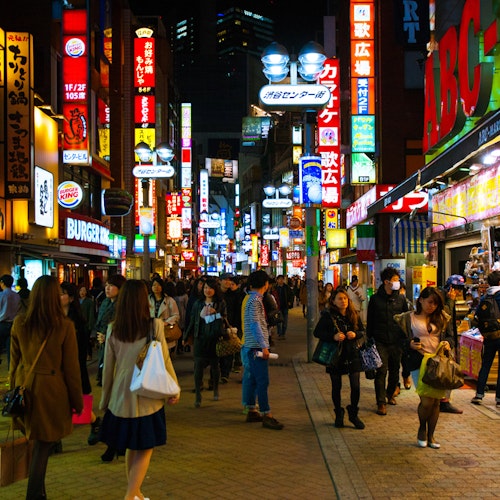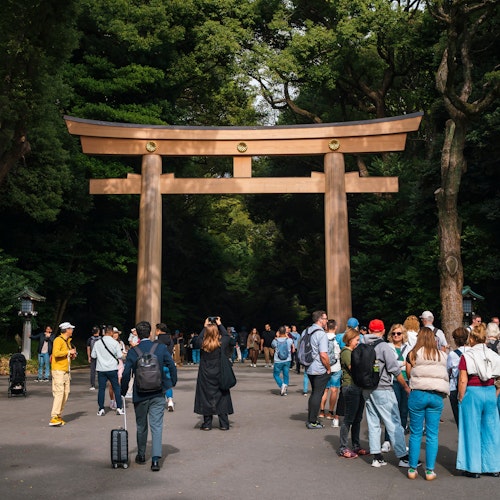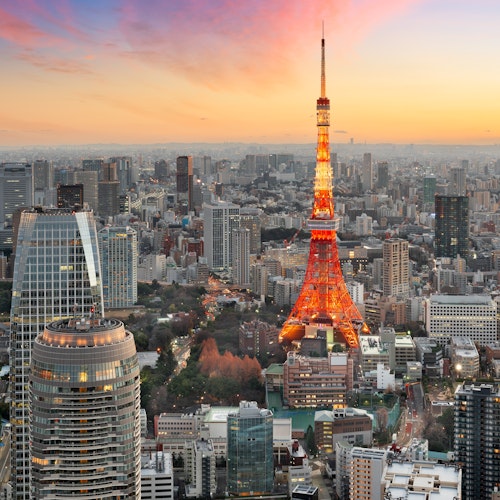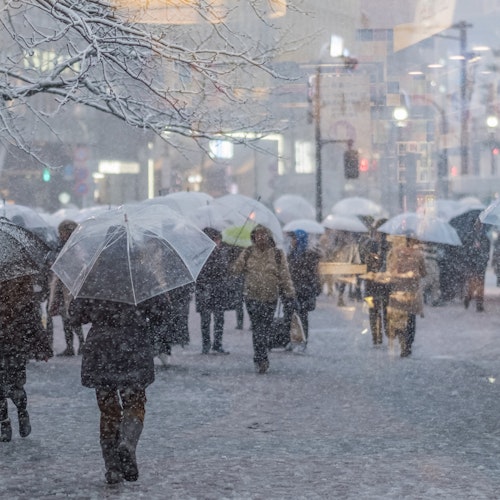
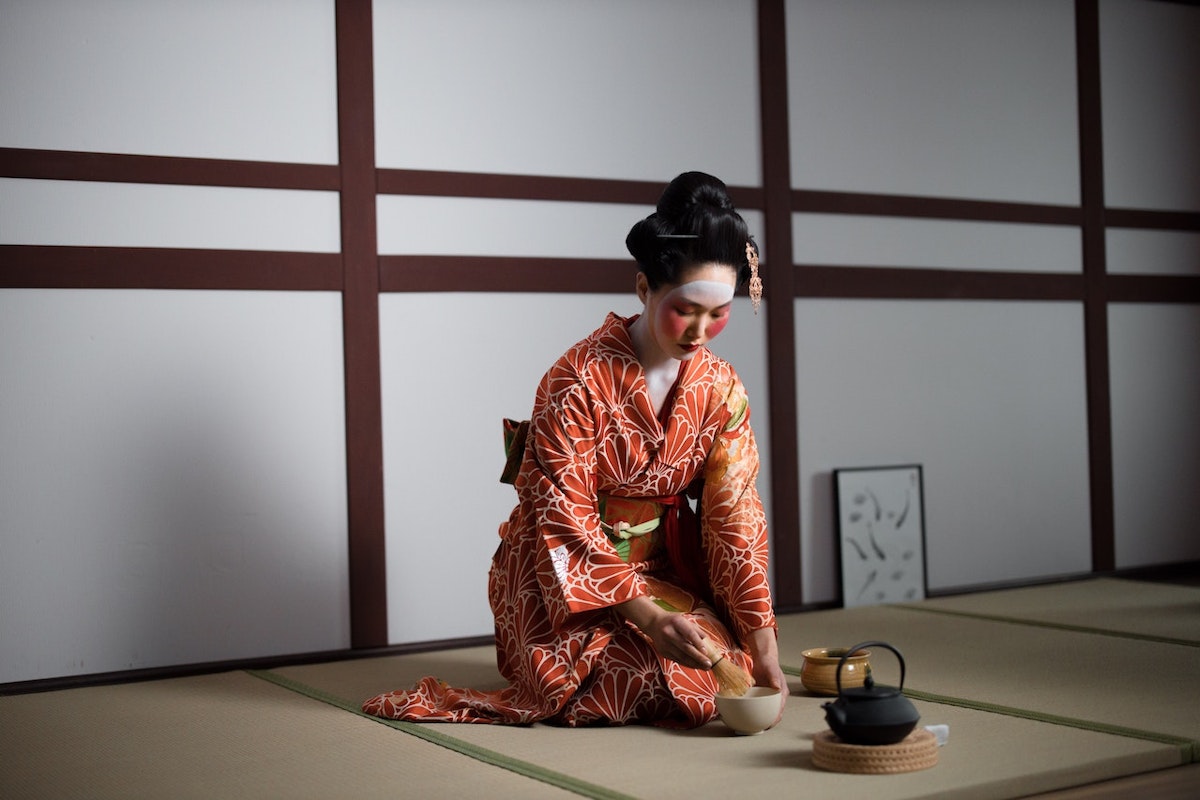
Japan's culture is steeped in tradition and innovation, and its museums are a reflection of this rich heritage. From national treasures to cutting-edge exhibits, Japan has an impressive collection of museums that showcase its history, art, and technological advancements. With a culture that values attention to detail and beauty, it's no surprise that Japanese museums are some of the best in the world.
In this article, we'll take a closer look at some of the must-visit museums in Japan, highlighting their unique features, exhibits, and collections. From the National Museum of Japanese History, where you can immerse yourself in the country's past, to the Ghibli Museum, where you can experience the magic of Japanese animation, there's something for everyone. So whether you're planning a trip to Japan or simply want to learn more about its fascinating culture, join us as we explore the must-visit museums of this enchanting country.
The National Museum of Japanese History, also known as Rekihaku, is a treasure trove of Japanese history and culture. Located in Sakura, Chiba Prefecture, this museum offers visitors a fascinating journey through Japan's past, from its earliest times to the present day. Through its extensive collection of artifacts, exhibits, and archives, visitors can immerse themselves in the cultural and social development of Japan and gain a deeper appreciation of its rich heritage.
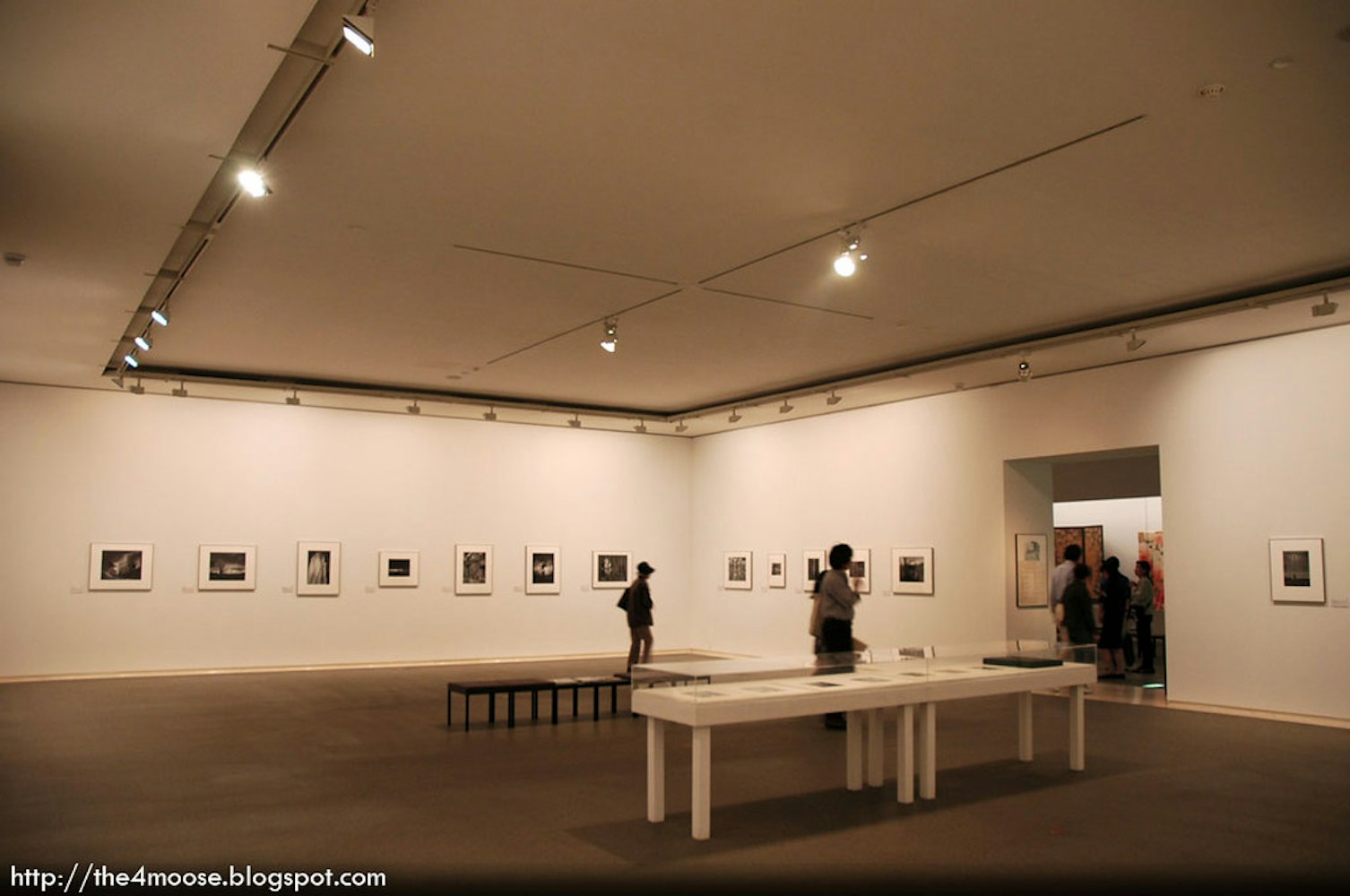
Image Credit: Takashi Toyooka
The National Museum of Japanese History is open daily from 9:30 a.m. to 5 p.m., except on Mondays when it is closed. Admission fees vary depending on the type of ticket you purchase. Regular admission costs 620 yen for adults, 410 yen for college and high school students, and 210 yen for children.
Discounts are available for groups, senior citizens, and people with disabilities. The museum also offers audio guides in English, Chinese, and Korean, making it accessible to non-Japanese speakers.
The National Museum of Japanese History has an impressive collection of samurai armor and weapons, showcasing the evolution of the samurai's equipment over time. Visitors can try on replicas of samurai armor and helmets and see various weapons used by the samurai in battle.

Image Credit: delo
The exhibit also features artifacts related to the samurai's daily life, providing a glimpse into their customs and traditions. The interactive display and demonstrations of samurai sword techniques make the exhibit an engaging and informative experience for visitors interested in Japanese history and culture.
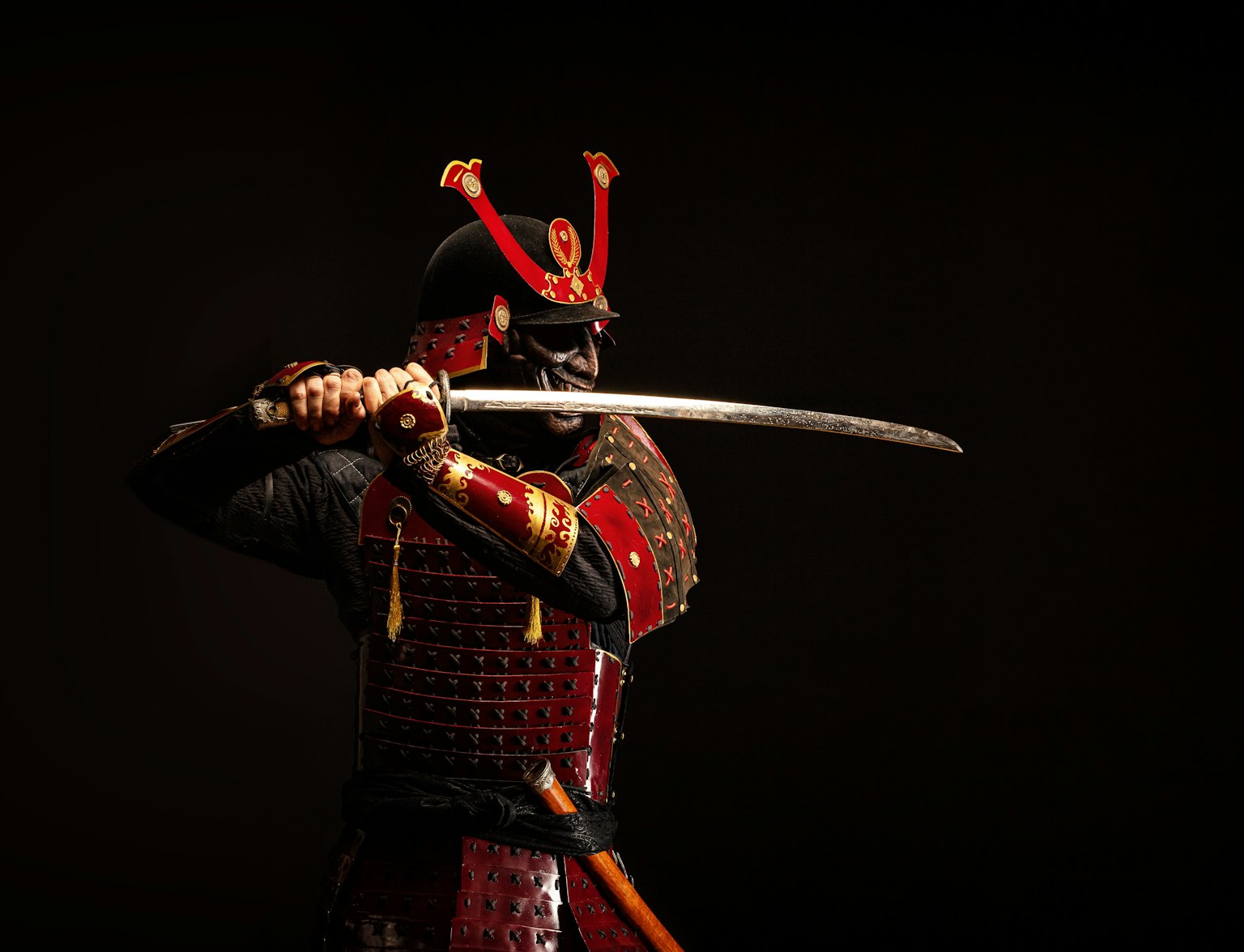
Try this samurai armor photo session in Tokyo.
The Edo Period Town Replica is one of the National Museum of Japanese History's most impressive exhibits. Visitors are transported back in time to the Edo period, which is considered one of the most peaceful and prosperous periods in Japanese history. During this time, Japan was ruled by the Tokugawa shogunate, and the country was isolated from the rest of the world.
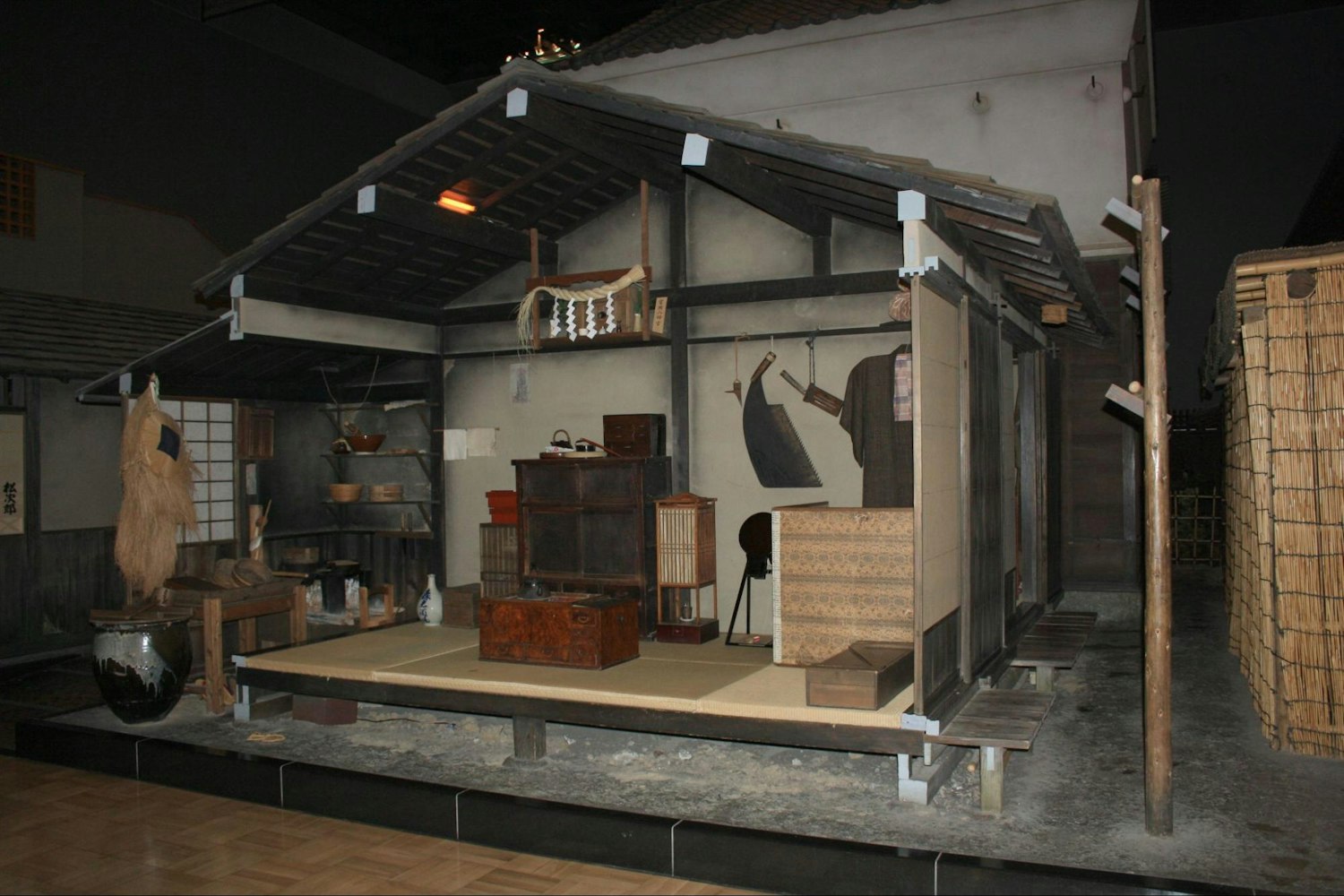
Image Credit: Wikimedia
The Edo Period Town Replica is a meticulously designed and constructed exhibit that recreates the town's architecture, streets, and shops in great detail. Visitors can explore the town and see how people lived, worked, and socialized during this period. The exhibit provides an immersive experience, with life-sized replicas of traditional Japanese houses, shops, and streets, complete with authentic decorations and furnishings.
The National Museum of Japanese History is home to an impressive collection of treasures from the Imperial Household. These treasures were once owned by the Japanese Imperial family and are considered some of the most important cultural artifacts in Japan.
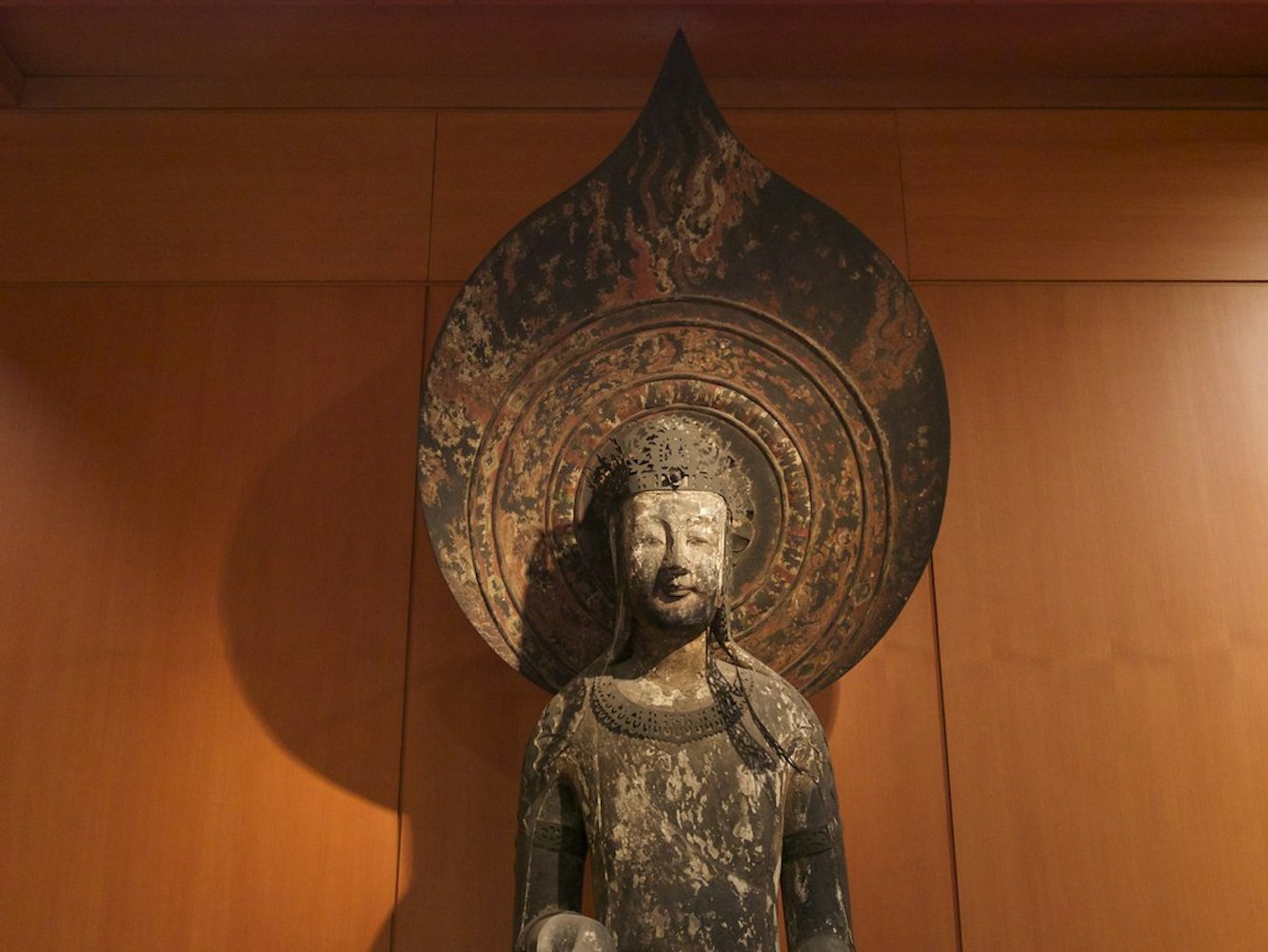
Image Credit: jenn2d2
The Imperial Household collection includes a variety of objects, including ceramics, calligraphy, textiles, and paintings. One of the most notable items in the collection is the Kudara Kannon, a national treasure that is one of the oldest known Buddhist sculptures in Japan. The collection also features examples of Japanese lacquerware, which is considered some of the finest in the world.
The Tokyo National Museum is a cultural institution that showcases Japan's rich artistic and cultural heritage. Founded in 1872, it is Japan's oldest and largest museum, offering visitors an extensive collection that spans over 5,000 years of Japanese history, including art, archaeology, and cultural artifacts.
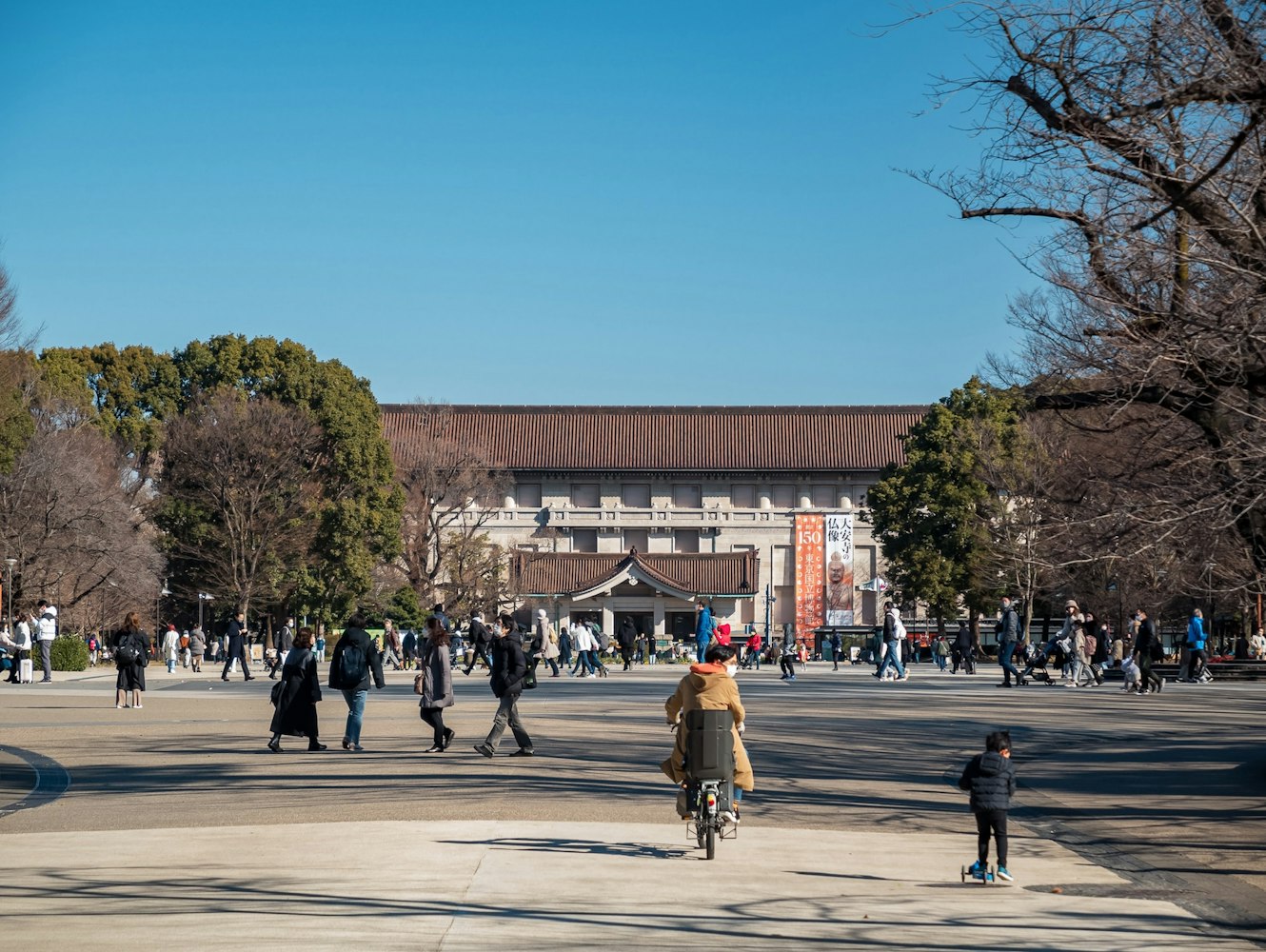
The museum is located in Ueno Park, in the Taito district of Tokyo, making it easily accessible by public transportation. It is open daily from 9:30 a.m. to 5 p.m., except on Mondays when it is closed and during the New Year's holidays from December 28 to January 1. Admission fees vary, with discounts available for groups, senior citizens, and people with disabilities.
Visitors can rent audio guides in English, Chinese, and Korean, making the museum accessible to non-Japanese speakers. The museum has a gift shop, a cafe, and a library that houses a collection of books and journals on Japanese art and culture. Workshops and events are also offered for visitors, including calligraphy lessons and traditional Japanese dance performances.
The Tokyo National Museum's art collection is one of the most impressive in Japan, featuring an extensive collection of masterpieces that span over 1,300 years of Japanese history. Visitors can see works by famous artists such as Hokusai, Hiroshige, and Sotatsu, as well as examples of traditional Japanese painting, such as Yamato-e and Rinpa.
One of the most notable pieces in the collection is the Tale of Genji scroll, a national treasure that depicts scenes from the famous novel by the same name. The scroll is over 10 meters long and features exquisite illustrations that offer insight into the lifestyle and culture of Japan's Heian period. Another notable piece is the folding screen painting Fudo Myoo, which is considered a masterpiece of Japanese Buddhist art.
The Tokyo National Museum's archaeological collection is an impressive display of Japan's rich history, featuring artifacts from prehistoric times to the Edo period. Visitors can see examples of Jomon and Yayoi pottery, as well as artifacts from the Kofun period, which includes some of Japan's most significant historical sites.
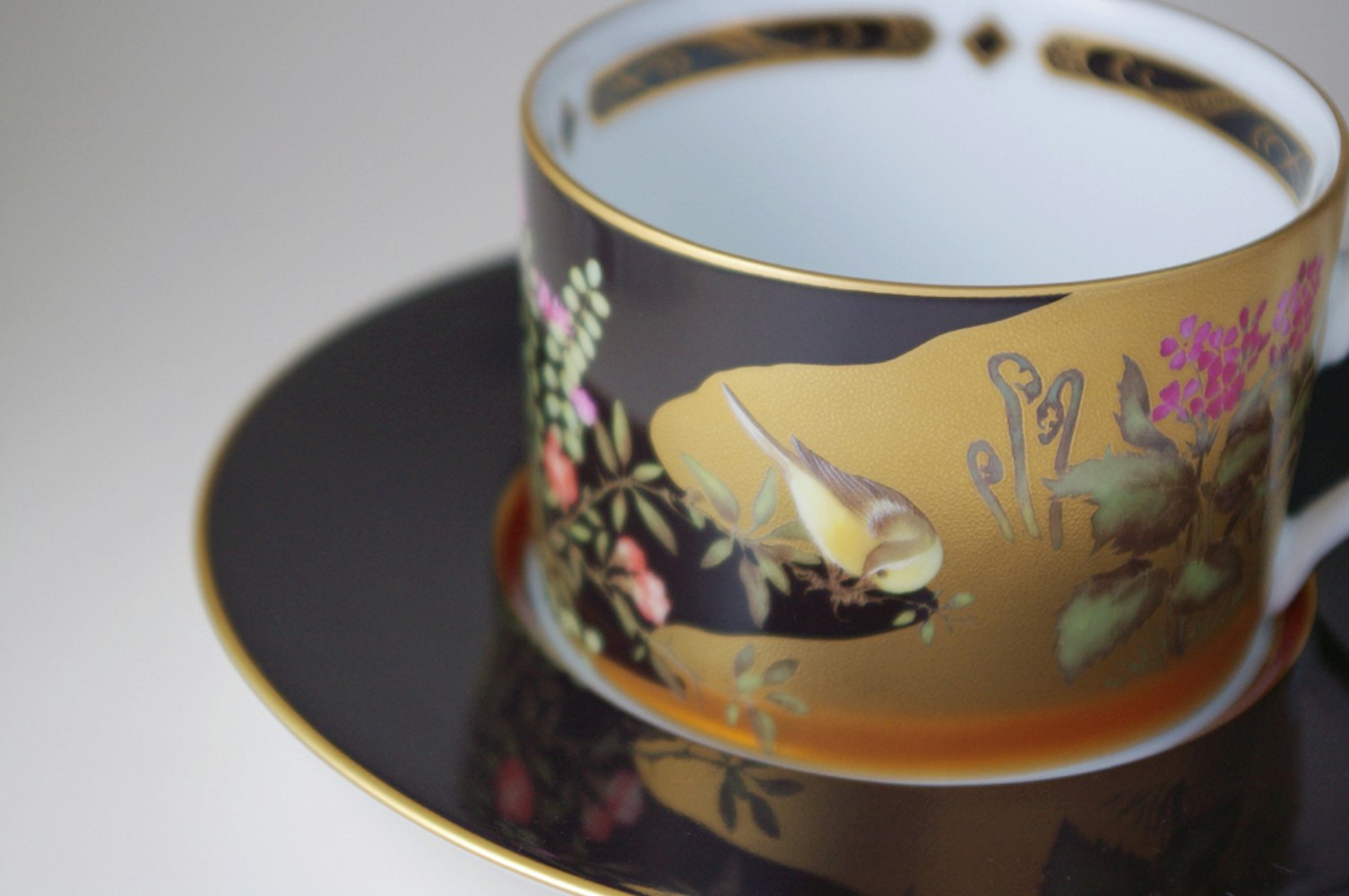
Image Credit: Wikimedia
One of the most notable pieces in the collection is the Dogu figurine, a national treasure that dates back to the Jomon period. The figurine is made of clay and is known for its intricate details and mysterious symbolism. The museum's collection also includes examples of Haniwa, terracotta clay figures from the Kofun period that were placed on tombs to protect the deceased.
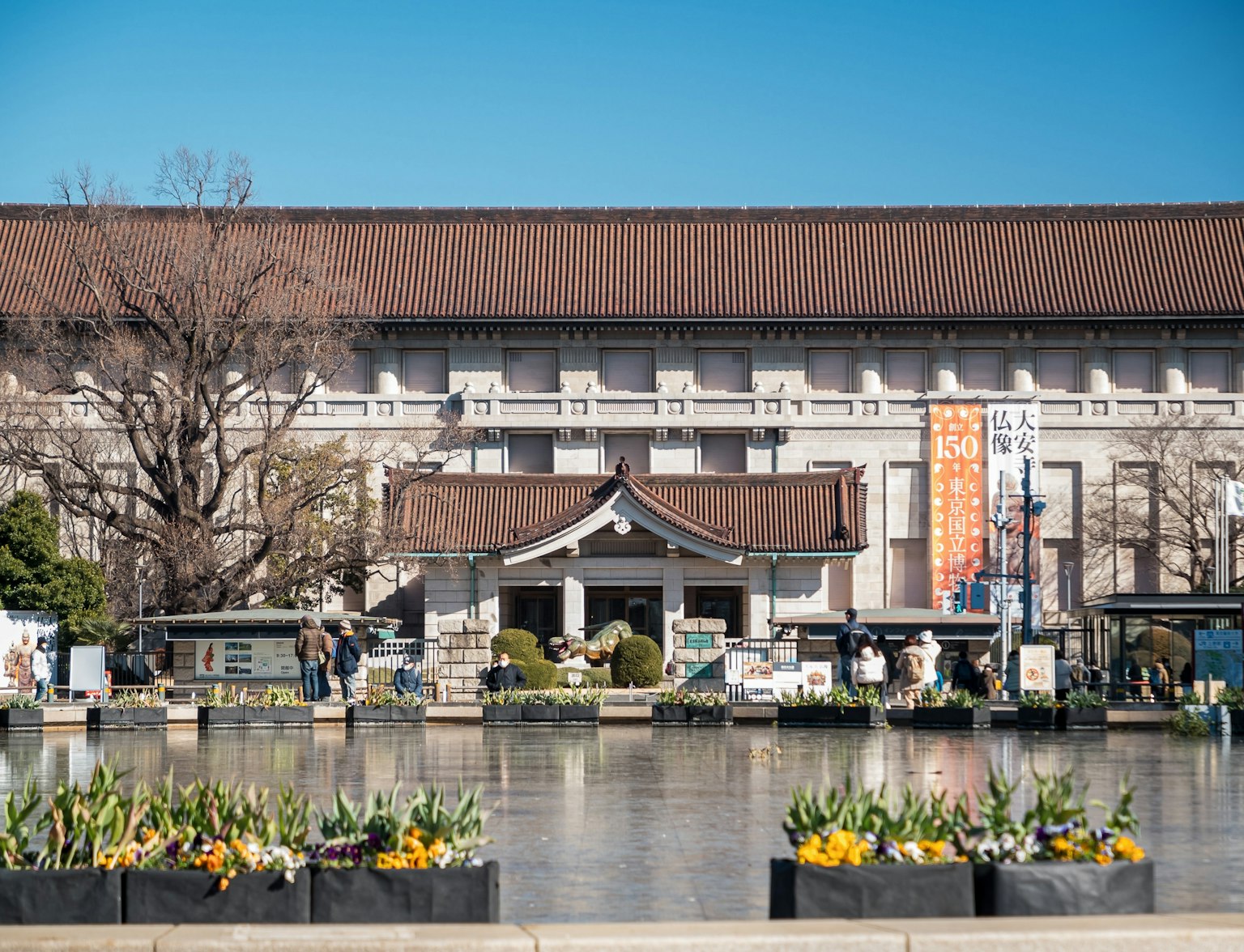
Visit Ueno Park for a brief tour of Tokyo National Museum.
The Kyoto National Museum is a cultural institution that showcases Japan's rich cultural heritage, with a focus on the art and artifacts of Kyoto and the surrounding Kansai region. The museum is located in the Higashiyama district of Kyoto, near the famous Kiyomizu-Dera temple, making it a popular destination for tourists and locals alike.
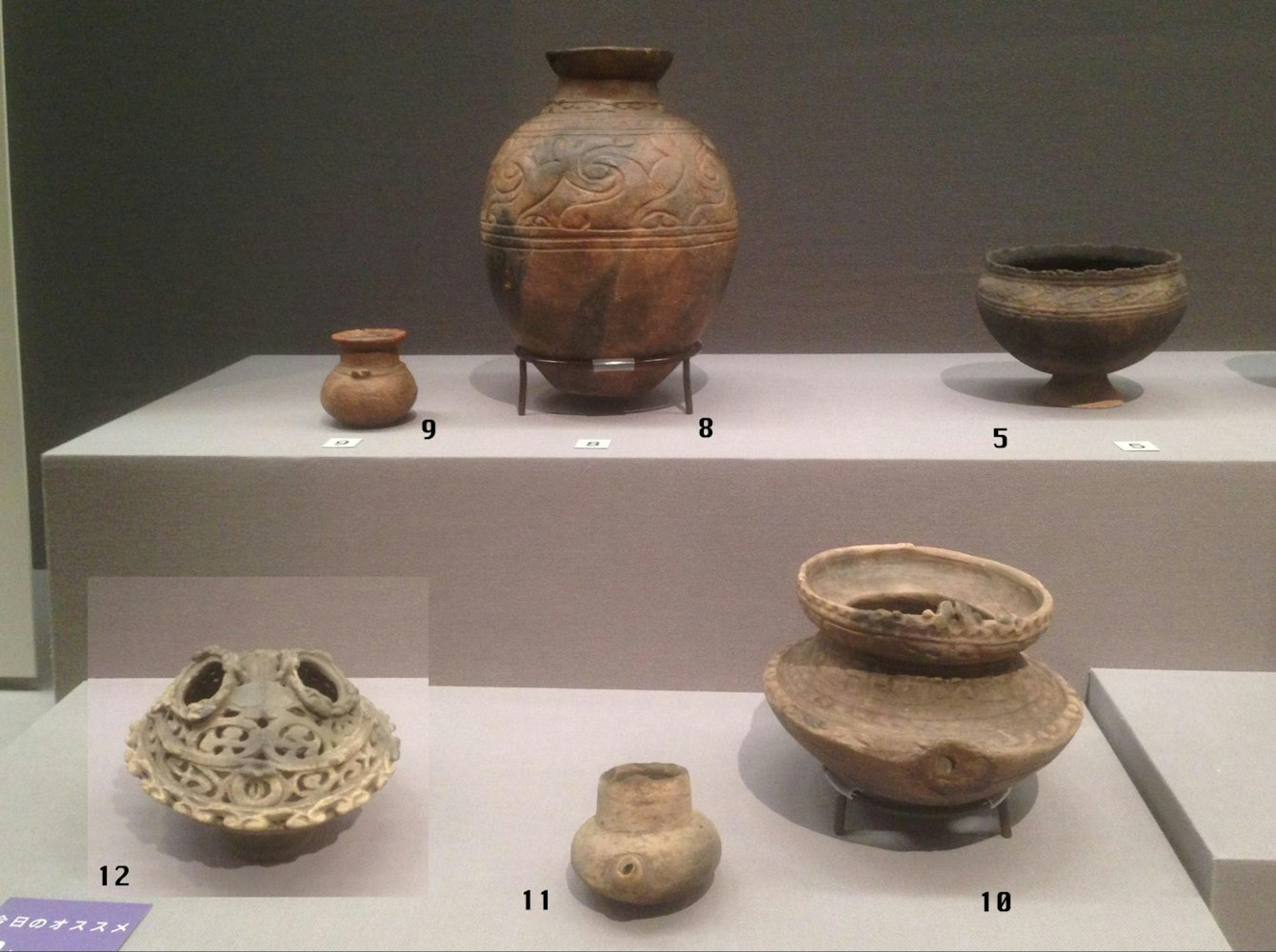
Image Credit: Lisa Pinehill
The museum is open daily from 9 a.m. to 5 p.m., except on Mondays when it is closed, and during the New Year's holidays from December 28 to January 1. Admission fees vary, with discounts available for groups, senior citizens, and people with disabilities. The museum is easily accessible by public transportation, with bus and subway stations nearby. The museum also has a gift shop and a cafe, as well as a library that houses a collection of books and journals on Japanese art and culture.
The Kyoto National Museum's collection of Japanese paintings and calligraphy is a highlight of the museum, offering visitors a glimpse into Japan's rich artistic heritage. Visitors can see works by famous artists such as Sesshu and Kano Eitoku, as well as examples of traditional Japanese painting techniques, such as sumi-e and nihonga.
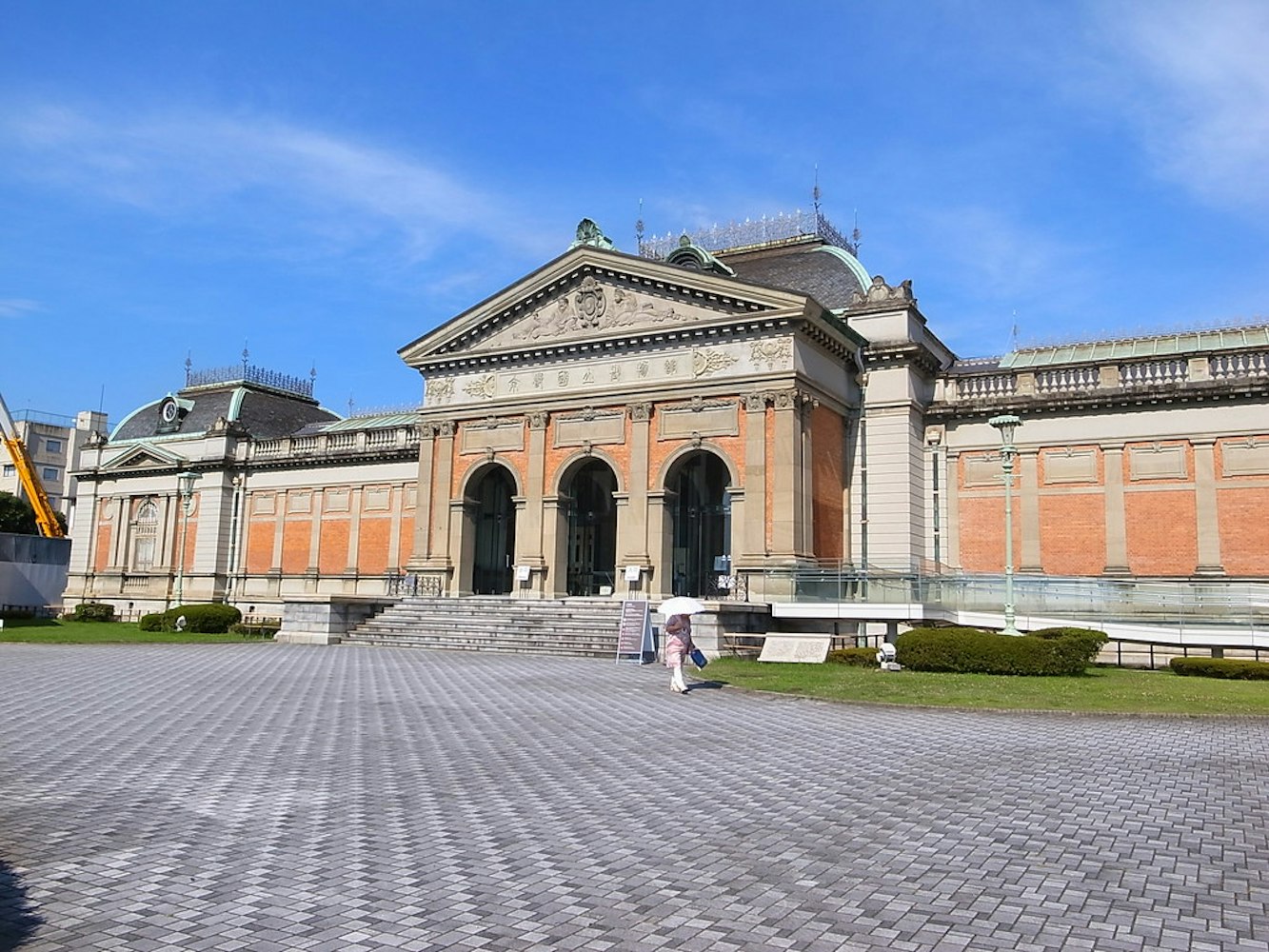
Image Credit: Richard Lee
One of the most notable pieces in the collection is the Tale of Genji screens, a national treasure that depicts scenes from the famous novel by the same name. The screens are over six meters long and feature intricate illustrations that offer insight into the lifestyle and culture of Japan's Heian period. Another notable piece is the Fushimi Kannon scroll, a national treasure that depicts the goddess of mercy in exquisite detail.
The Kyoto National Museum's collection of Buddhist art and sculpture is a treasure trove of ancient artifacts and statues, offering visitors a glimpse into Japan's rich religious and cultural history. Visitors can see examples of Buddhist statues and artifacts from different periods, including works from the Heian, Kamakura, and Muromachi periods.
One of the most notable pieces in the collection is the Miroku Bosatsu statue, a national treasure that dates back to the Heian period. The statue depicts the Bodhisattva Maitreya, also known as Miroku in Japanese, who is regarded as the future Buddha. The statue is over 180 centimeters tall and features intricate details, including the folds of the robe and the expression on the face.
The Kyoto National Museum's collection of ceramics and tea ceremony utensils is a testament to the artistry and cultural significance of traditional Japanese ceramics and the tea ceremony. Visitors can see examples of traditional Japanese ceramics, including celadon and Raku ware, as well as examples of tea ceremony utensils such as tea bowls and incense burners.
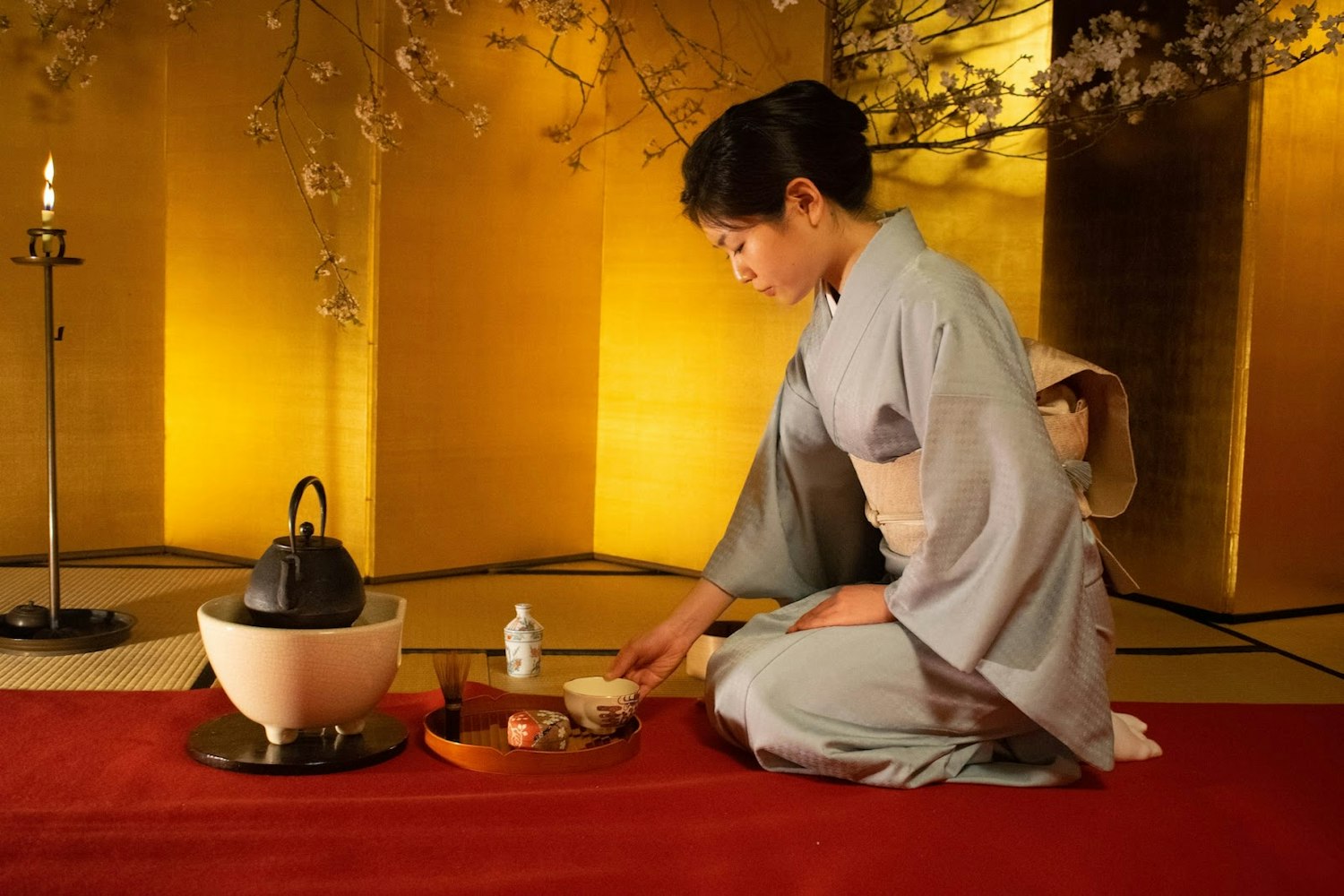
One of the most notable pieces in the collection is the Raku chawan, a type of tea bowl that was invented by the Raku family in the 16th century. The Raku chawan is known for its simple and rustic appearance and for its ability to enhance the taste and aroma of the tea. Visitors can also see examples of other types of tea bowls, including Hagi ware and Karatsu ware, each of which has its own unique style and characteristics.
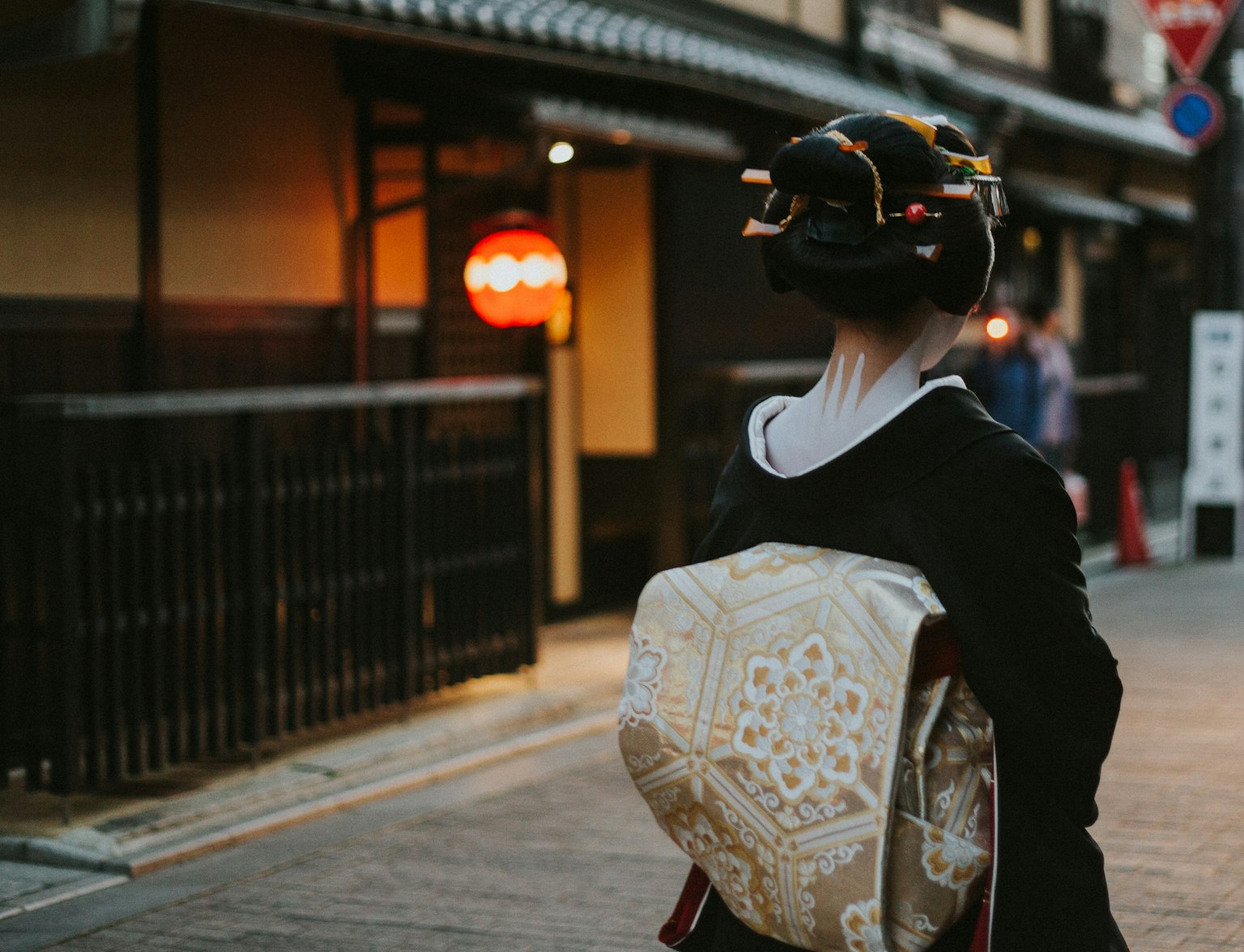
Enjoy a side trip to old town after the museum tour.
The Hiroshima Peace Memorial Museum is a solemn and moving institution that serves as a reminder of the devastating effects of the atomic bombing of Hiroshima. The museum is located in the Peace Memorial Park, near the epicenter of the atomic bomb blast, and is dedicated to promoting peace and understanding in the world.
The museum is open daily from 8:30 a.m. to 6:00 p.m., except on December 30 and 31, when it is closed. These hours allow visitors to explore the museum at their own pace without feeling rushed or pressured. The museum staff are knowledgeable and friendly and are always available to answer questions and provide information.
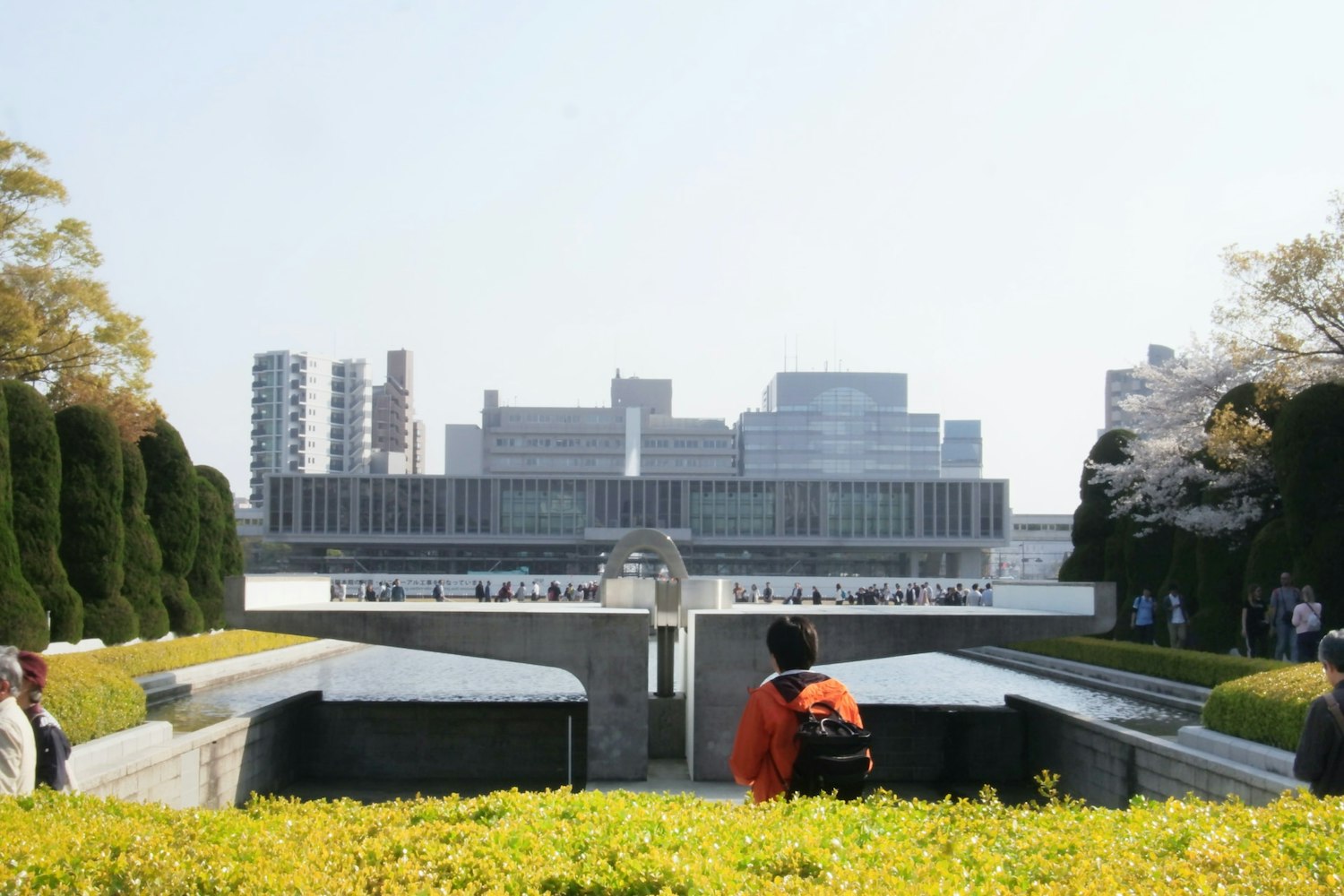
Admission fees for the museum are reasonable, with discounts available for students, senior citizens, and people with disabilities. The museum also offers free admission to school groups and students under the age of 18, making it an ideal destination for educational field trips.
The Hiroshima Peace Memorial Museum's collection of artifacts, documents, and photographs provides visitors with a detailed understanding of the events leading up to the atomic bombing of Hiroshima, as well as the aftermath of the bombing. The museum's exhibits begin with an overview of the political and military situation in Japan and the world at the time of the bombing, including Japan's entry into World War II and the development of the atomic bomb by the United States.
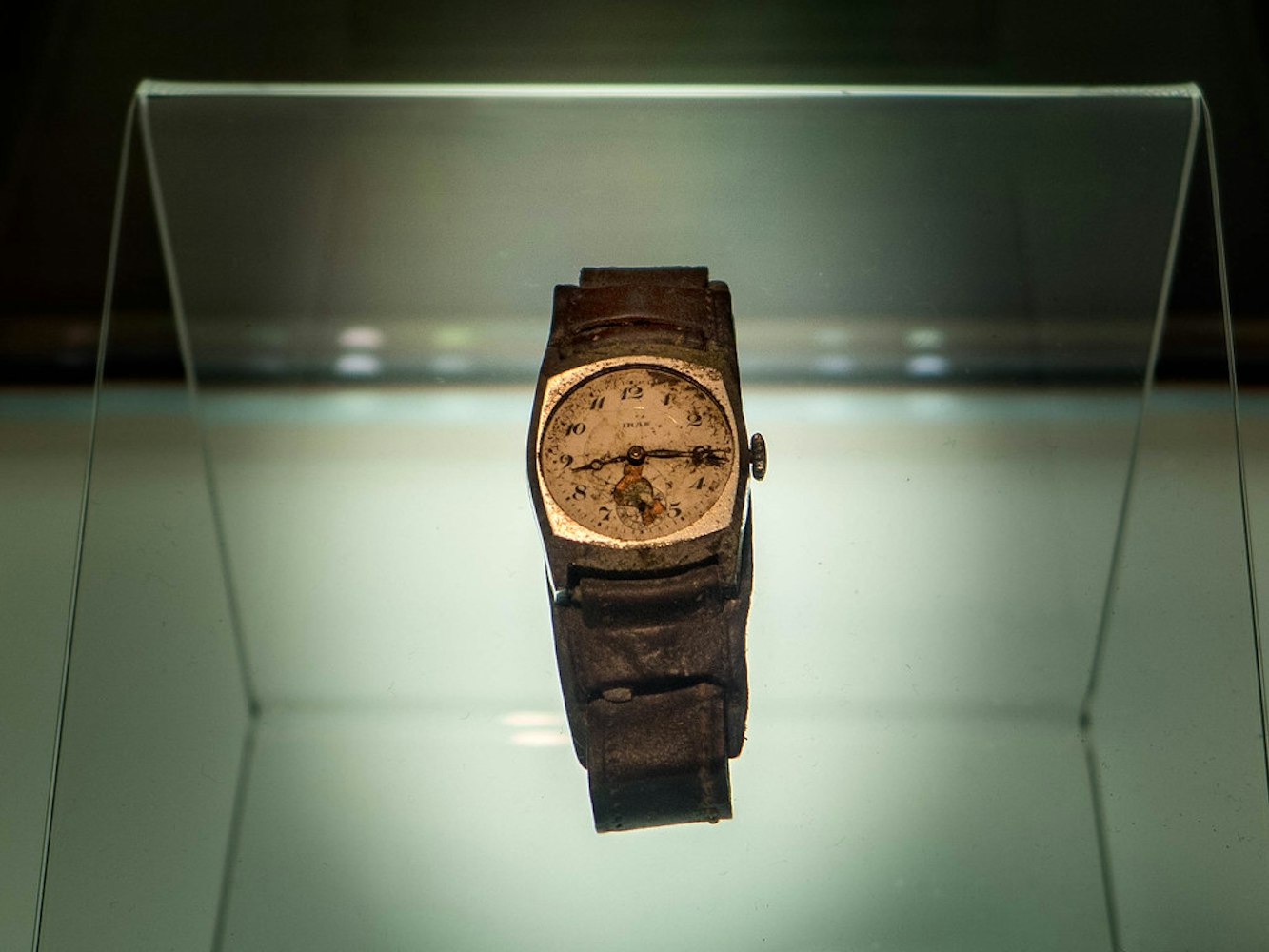
Image Credit: Mustang Joe
Visitors can see examples of the destruction caused by the bomb, including melted glass, twisted metal, and personal belongings of the victims. The museum also features a model of the city before and after the bombing, allowing visitors to see the extent of the damage. The model highlights the areas of the city that were most heavily affected by the bombing, including the hypocenter, or ground zero, where the bomb was dropped.
One of the most powerful and moving aspects of the Hiroshima Peace Memorial Museum is the opportunity for visitors to hear personal testimonies from survivors of the atomic bombing. These testimonies provide a firsthand account of the devastation caused by the bomb and offer visitors a chance to connect with the human experience of the bombing.
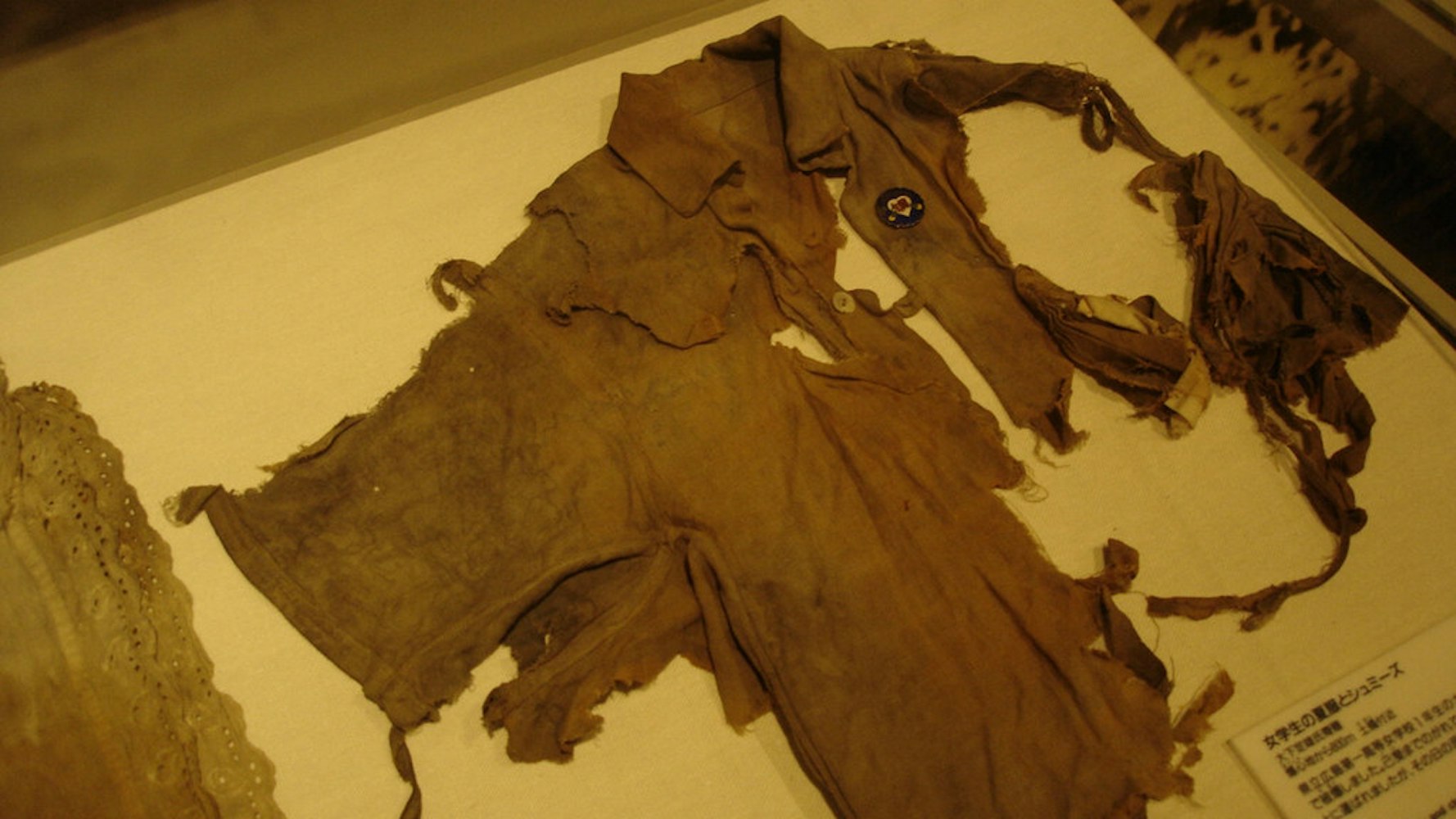
Image Credit: David McKelvey
The museum's exhibits also feature a variety of artifacts related to the bombing, such as clothing worn by the victims and letters written by survivors to their loved ones. These artifacts provide a poignant reminder of the human cost of war and the importance of promoting peace and understanding. Visitors can see the physical effects of the bombing on everyday objects, such as bicycles and watches, which were left melted and twisted by the intense heat and radiation of the blast.
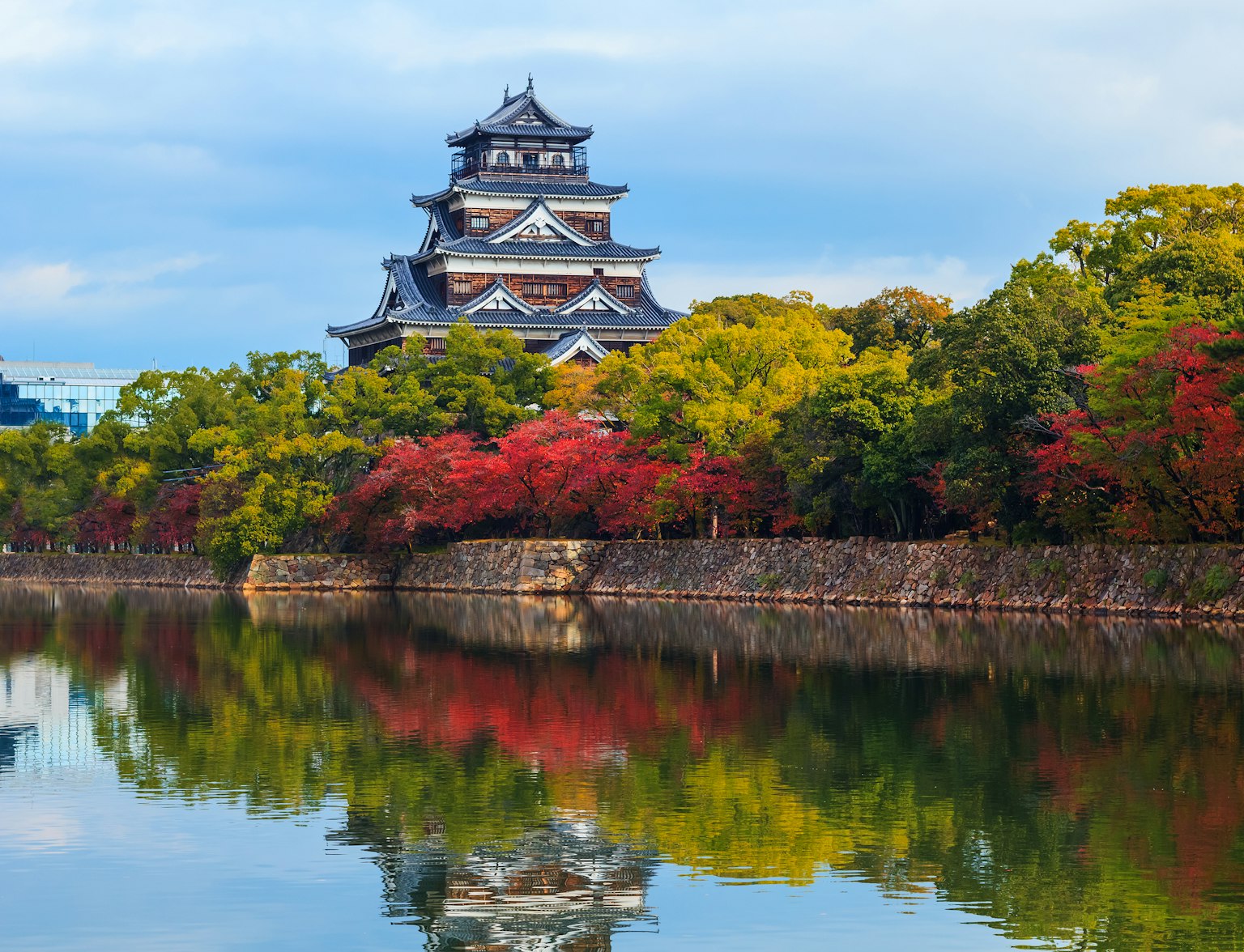
Learn more about the history of Hiroshima.
The Ghibli Museum is a must-visit destination for anime and animation enthusiasts visiting Japan. The museum is dedicated to the works of Studio Ghibli, one of the most renowned animation studios in the world. The museum provides visitors with a chance to enter the magical world of animation and experience the unique style and storytelling of Studio Ghibli's films.
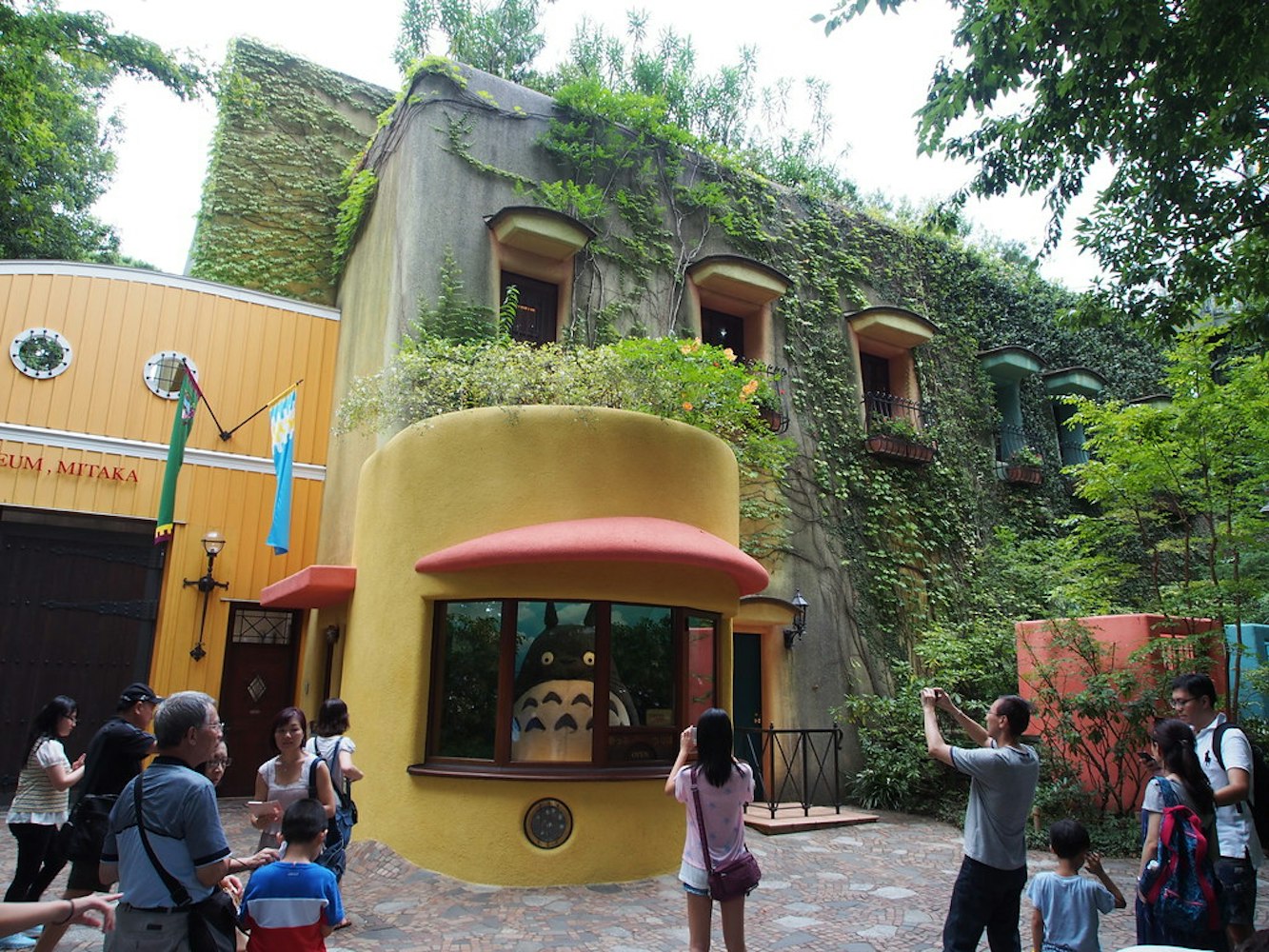
Image Credit: nakashi
The Ghibli Museum is located in Mitaka, a suburban city located in western Tokyo. The museum's location is just a few minutes' walk from Mitaka Station, which can be reached by taking the JR Chuo Line from Shinjuku Station. Visitors can also take the Keio Inokashira Line from Shibuya Station to Kichijoji Station, then transfer to a bus to reach the museum. The museum's location makes it easily accessible for visitors to Tokyo, whether they are staying in the city center or in surrounding areas.
The museum is open from 10:00 a.m. to 6:00 p.m. daily, except for Tuesdays, when it is closed. Visitors are encouraged to book their tickets in advance, as the museum has a limited number of visitors per day to ensure a comfortable and enjoyable experience for all guests. Admission fees vary based on age and time of entry, with discounts available for children and seniors.
The Ghibli Museum offers visitors a chance to discover the enchanting world of Studio Ghibli animation, which has captivated audiences around the world with its unique style and storytelling. The museum's exhibits include original sketches, storyboards, and animation cells from the studio's films, providing visitors with an in-depth look at the animation process. Visitors can see how the studio's artists bring their characters and stories to life, from the earliest stages of development to the finished product.
The museum's exhibits also showcase the unique style and themes of Studio Ghibli's films. Visitors can see the iconic characters and settings from films such as "My Neighbor Totoro," "Spirited Away," and "Princess Mononoke," as well as lesser-known titles like "Only Yesterday" and "Whisper of the Heart." The museum's exhibits provide a glimpse into the creative process behind these films, as well as the themes of nature, family, and the power of the human spirit that are central to the studio's work.
The Ghibli Museum offers visitors a chance to not only view the exhibits but also interact with them in a fun and engaging way. The museum is designed to be an immersive experience, with exhibits and displays that encourage visitors to engage with the museum's content.
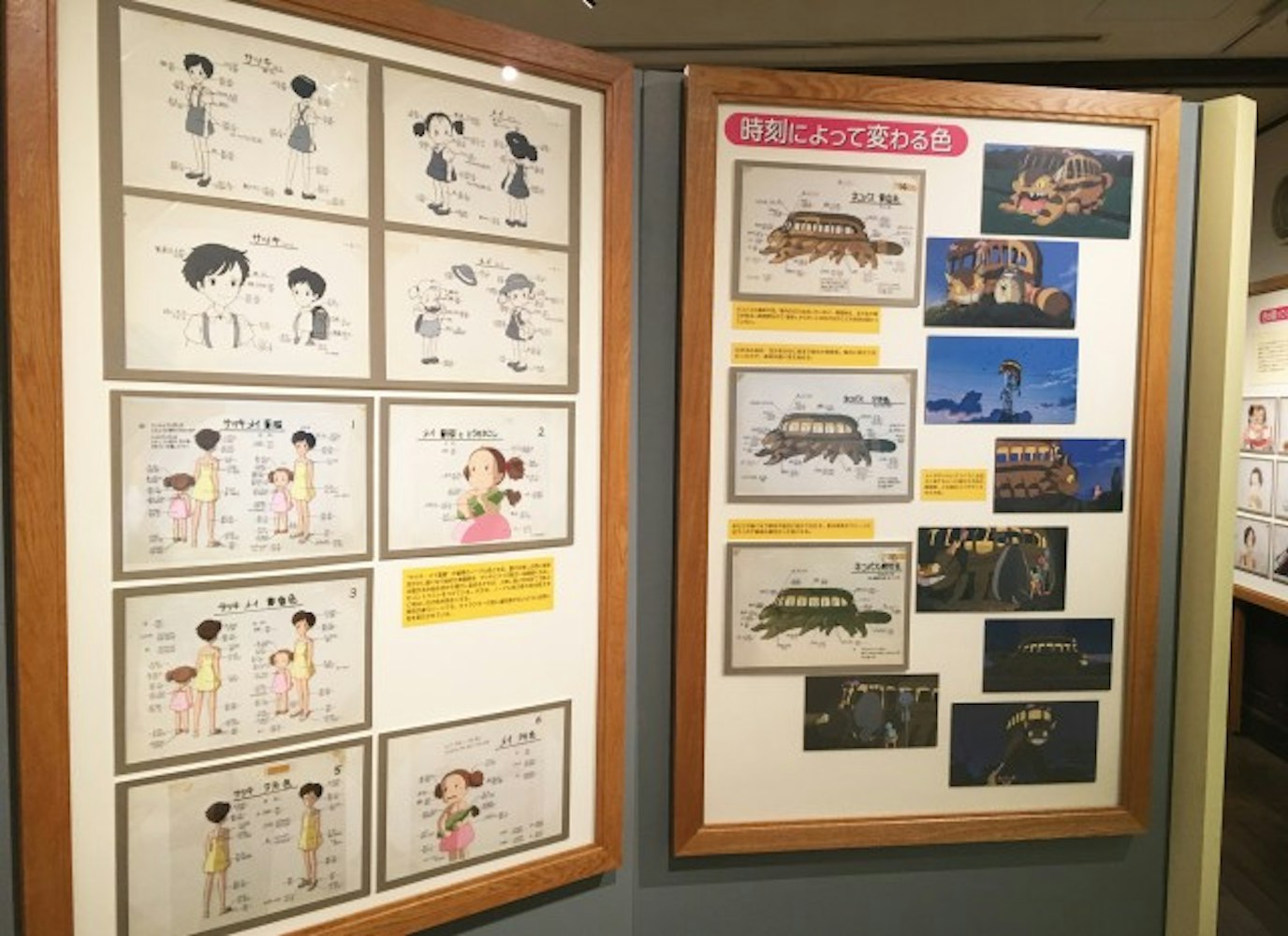
Image Credit: Spoon & Tamago
One of the most popular exhibits is the replica of the cat bus from "My Neighbor Totoro." Visitors can climb aboard the bus and take pictures, which is a fun and memorable experience for both adults and children alike. The bus is a life-size replica of the beloved character from the film, and visitors can explore the bus's interior and imagine themselves in the world of the film.
The museum's theater screens exclusive short films that are only shown at the Ghibli Museum, providing a unique and exciting experience for visitors. These short films are created by the studio's talented animators and offer a glimpse into the world of Studio Ghibli that cannot be found anywhere else. Visitors can watch the films in the museum's theater, which is designed to look like an old-fashioned movie theater with plush red seats and a grand curtain.
In addition to the exclusive films, the Ghibli Museum also offers a wide variety of unique merchandise that is not available anywhere else. Visitors can find a range of items inspired by the studio's films, including clothing, toys, and artwork. The museum's gift shop is designed to look like a cozy and inviting bookstore, with shelves lined with books and merchandise. Visitors can take home a piece of the magic of Studio Ghibli with a unique and special item from the museum's gift shop.
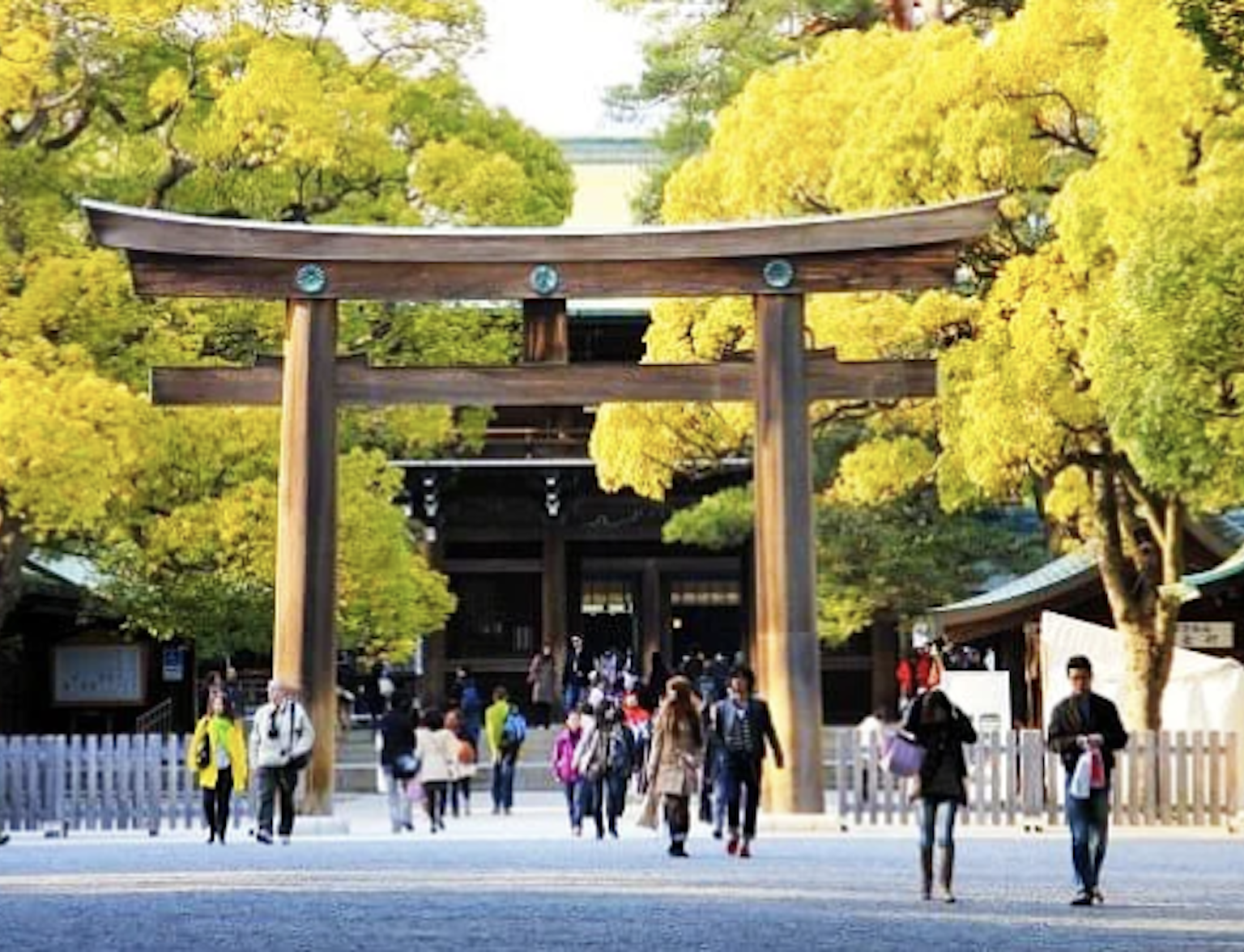
Visit Ghibli Museum with a chartered vehicle.
Japan is a country with a rich history and culture that is worth exploring through its many museums. From the National Museum of Japanese History to the Ghibli Museum, each museum offers unique collections and exhibitions that provide a deeper understanding of the country's art, history, and traditions.
Visiting these museums not only offers an educational experience but also provides a chance to engage with exhibits, watch exclusive short films, and find unique merchandise. Each museum is designed to offer an immersive and unforgettable experience that showcases the creativity, artistry, and innovation that Japan is known for. Whether you're interested in history, art, or animation, the must-visit museums in Japan provide a glimpse into the heart of the country and its culture, making them a must-see destination for any traveler.
